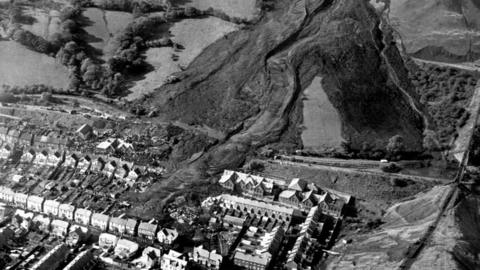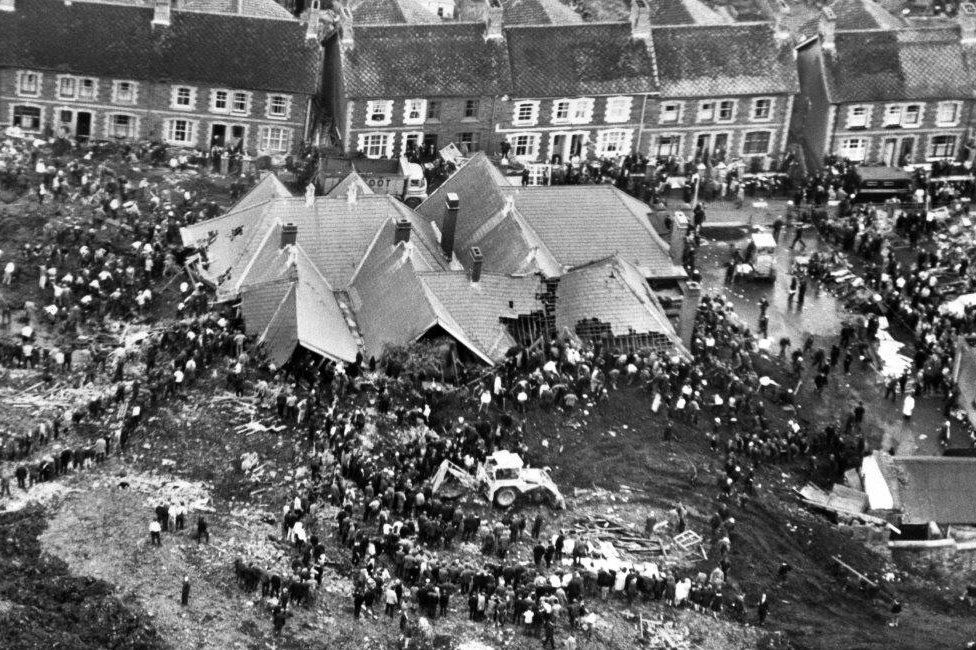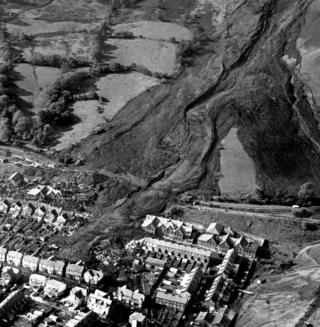Aberfan 1966: The Day A Mountain Of Coal Engulfed A Village's Future
The morning of October 21, 1966, dawned like any other Friday in the small, close-knit Welsh village of Aberfan, nestled in the South Wales valleys near Merthyr Tydfil. Children were heading to school, adults were preparing for their day, and the familiar landscape, dominated by the towering colliery spoil tips, seemed a permanent fixture. Yet, within minutes, this ordinary morning would transform into one of the most harrowing and tragic events in British history, leaving an indelible scar on the nation's memory and a deep wound in the heart of Aberfan.
The Aberfan disaster, known in Welsh as Trychineb Aberfan, was not a conventional mining accident underground, but a catastrophic collapse of a colliery spoil tip. This was a man-made mountain of coal waste, built up over years from the nearby Merthyr Vale Colliery. What made this particular tip so dangerous, and ultimately fatal, was a critical oversight: it had been created on a mountain slope directly above the village, and, crucially, it overlaid a natural spring. The stage was set for an unimaginable tragedy.
The Day That Changed Everything: October 21, 1966
A Village Wakes Up to Horror
For weeks leading up to that fateful day, heavy rain had relentlessly poured down on the Welsh valleys. This continuous downpour played a pivotal role in the disaster. Water, seeping into the vast accumulation of coal waste, began to build up within the tip, saturating the spoil and turning it into a treacherous, unstable mass. The natural spring beneath only exacerbated the problem, weakening the tip's foundations from below.
At precisely 9:15 AM on October 21, 1966, the inevitable happened. Without warning, an enormous section of the spoil tip, estimated to be nearly 140,000 cubic yards (or about 105,000 cubic metres) of black slurry, began to slide down the mountain. It was not a slow creep, but a terrifying, unstoppable torrent. The landslide travelled at an astonishing speed, estimated between 17 to 34 kilometres per hour (10 to 21 mph), covering a distance of approximately 500 metres in a mere five minutes.
The black, viscous mass of coal waste cascaded down the hillside, destroying everything in its path. It first engulfed a farm, then several houses, before slamming directly into its primary target: Pantglas Junior School. It was just after morning assembly, and the classrooms were full of children, ready to begin their lessons. The school building, along with surrounding homes, was instantly obliterated, buried under tons of cold, dark slurry.
The Human Cost: Lives Lost
The Unimaginable Toll
The immediate aftermath was one of utter devastation and chaos. The landslide had destroyed a significant portion of the village, but the true horror lay in the human toll. The Aberfan disaster resulted in the deaths of 144 people. Of these, a heartbreaking 116 were children, most of whom were pupils at Pantglas Junior School. The remaining 28 victims were adults, many of them mothers trying to save their children, or residents caught in their homes.
The numbers alone cannot convey the profound impact this event had. For a small, close-knit community like Aberfan, losing 116 children meant that nearly every family, every street, every household was touched by grief. Generations were wiped out in an instant. The close-knit and thriving Merthyr Tydfil community, of which Aberfan was a vital part, was decimated. The screams of the trapped, the frantic digging by parents and rescuers, and the agonizing wait for news created an atmosphere of unimaginable anguish.
Rescuers, including villagers, miners, and emergency services, worked tirelessly and desperately, often with bare hands, to dig through the debris. The hope of finding survivors quickly faded as the sheer volume and density of the spoil became apparent. The image of the school, once a vibrant hub of childhood, now reduced to a buried tomb, remains one of the most poignant symbols of the disaster.
The Precursors to Tragedy: Why It Happened
A Mountain of Waste, A Hidden Danger
The Aberfan disaster was an industrial incident rooted in the practices of the coal mining industry. Colliery spoil tips were a common sight in mining regions, necessary repositories for the waste material extracted alongside coal. However, the construction and management of these tips were often lacking in proper geological and engineering assessments.
The key factors contributing to the collapse were a deadly combination:
- Location: The tip was built on a steep mountain slope directly above a populated village.
- Underlying Spring: Crucially, it was constructed over a natural spring, which meant water was constantly flowing beneath the tip, weakening the ground.
- Heavy Rainfall: Prolonged and intense rainfall in the weeks leading up to October 21st saturated the tip's material. The water could not drain effectively, leading to a dangerous build-up of hydrostatic pressure within the spoil. This pressure, combined with the unstable foundation, caused the mass to lose its internal friction and slide catastrophically.
While the immediate trigger was the heavy rain, the underlying cause was the unsafe placement and construction of the tip, a failure to understand the geological risks, and a lack of proper drainage systems. The disaster highlighted the urgent need for stringent safety regulations and geological surveys in industrial waste management.
The Aftermath and Legacy
A Nation Mourns, A Village Remembers
The Aberfan disaster sent shockwaves across Britain and the world. Queen Elizabeth II visited the village, offering comfort to the grieving community, a gesture that was deeply appreciated. The immediate focus was on recovery and support for the survivors and bereaved families. A disaster fund was established, drawing donations from around the globe.
Beyond the immediate aftermath, a public inquiry was launched to investigate the causes of the disaster. The tribunal's findings were damning, placing blame squarely on the National Coal Board (NCB) for negligence and a lack of proper geological knowledge. The report detailed how the NCB had been aware of the dangers of placing spoil tips on springs but had failed to act on this knowledge. The disaster led to significant changes in legislation regarding spoil tip safety and management, ensuring that such a catastrophe would never happen again.
The Aberfan disaster remains one of the worst mining-related disasters in British history. It serves as a stark reminder of the human cost of industrial negligence and the vital importance of safety regulations. For the people of Aberfan, the memory of that day is etched deep into their collective consciousness. The village has rebuilt, but the scar of loss remains. A memorial garden now stands on the site of the former school, a peaceful place of remembrance for the 116 children and 28 adults who lost their lives.
The Aberfan disaster is a story of profound loss, but also of incredible community resilience and the enduring power of memory. It stands as a testament to the lives lost and a perpetual warning against complacency in industrial safety, ensuring that the victims are never forgotten and their sacrifice continues to inform practices designed to protect communities from similar tragedies.

Aberfan disaster: 50th anniversary marked with silence - BBC News

Aberfan disaster: The Queen's regret after tragedy - BBC News

Aberfan disaster: The Queen's regret after tragedy - BBC News